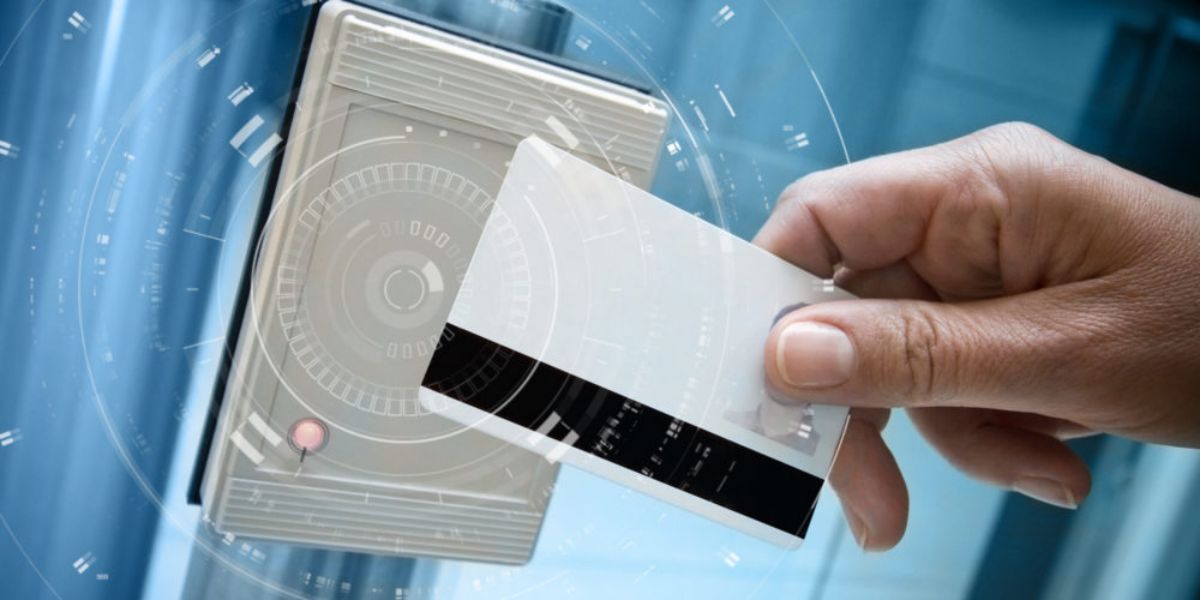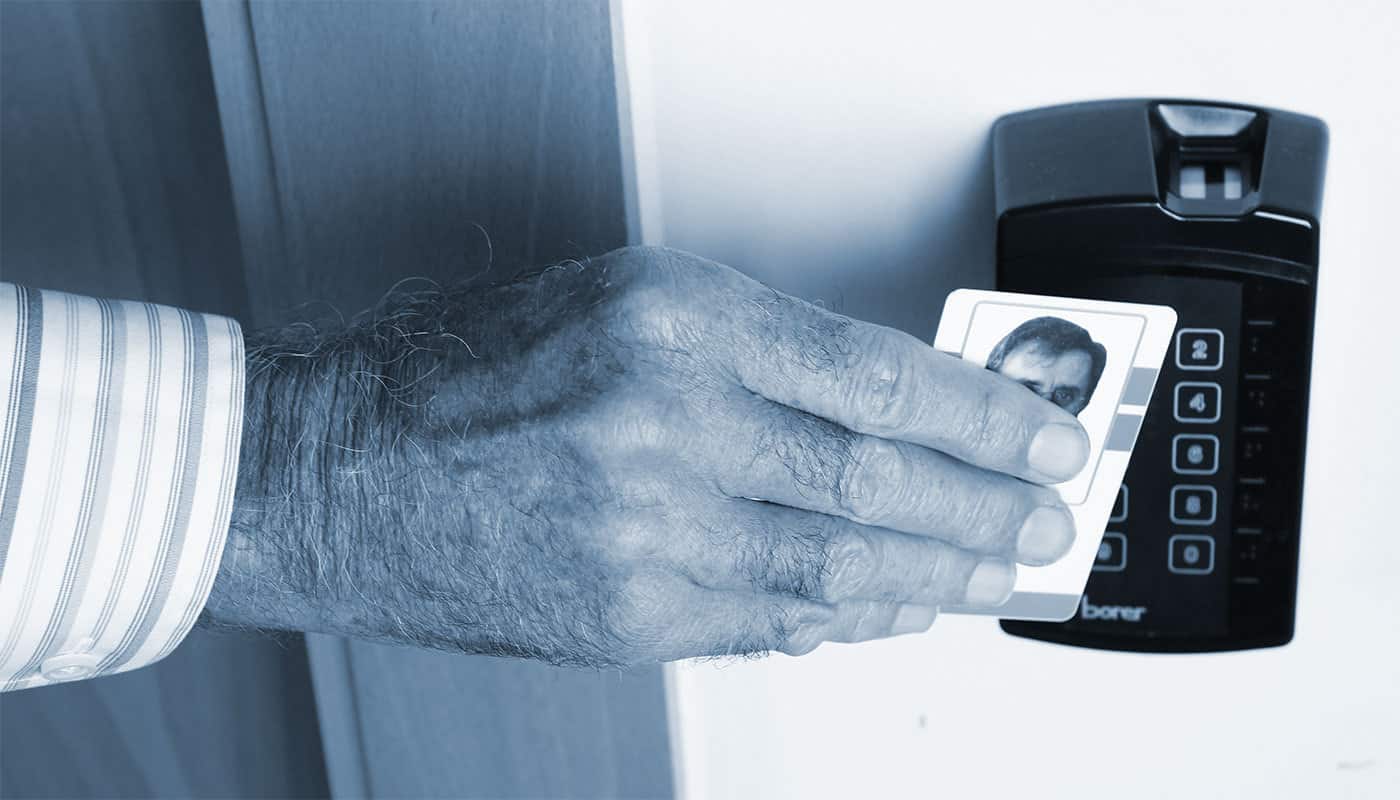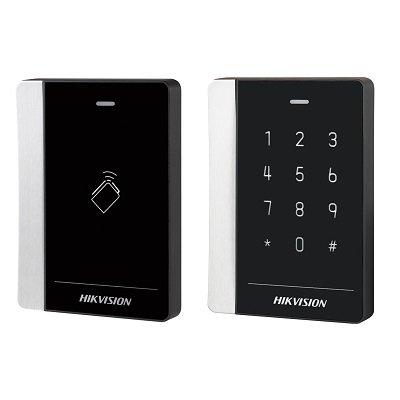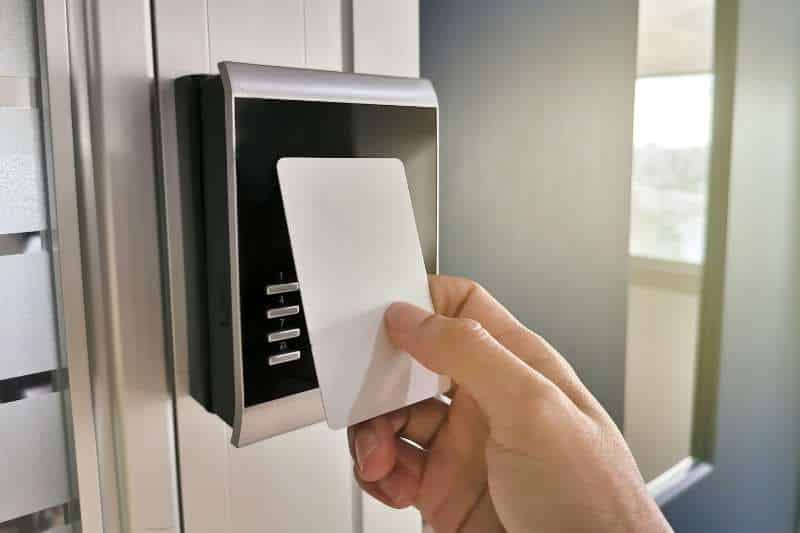- Home
- About Us
- Products
- Electronic Article Surveillance System EAS / Retail Anti theft Systems
- Display Stands
- Restaurant Pager
- People Counting Systems
- Queue Management Systems
- Access Control System
- Time Attendance Systems
- Audio & Visual System Solutions
- Display Solutions
- CCTV Cameras in Qatar: Enhancing Security Solutions
- Time Lapse Construction Camera
- Flap Barrier, Speed Gates, Turnstiles Access Control
- Gate Barriers System & Bollards in Qatar
- Parking Management & Gate Automation
- Library Management Systems
- IT & Telecom
- Lockers & Key Management Systems
- Intrusion Alarm System
- Perimeter Security
- Vehicle Tracking
- Time Recorders & Time Stamps
- Emergency Exit Door Alarms
- Clients
- Contact Us
- Support
Contents
- 1 Access Card Controllers: An In-Depth Guide
- 1.1 Introduction to Access Card Controllers
- 1.1.1 Card Readers
- 1.1.2 Types of Access card controllers:
- 1.1.3 Control Panel
- 1.1.4 Access Cards
- 1.1.5 Software
- 1.1.6 Additional Considerations
- 1.1.7 1. Card Presentation
- 1.1.8 2. Data Transmission
- 1.1.9 3. Authentication
- 1.1.10 4. Decision Making
- 1.1.11 5. Logging
- 1.1.12 Additional Features in Modern Access Control Systems
- 1.2 Types of Access Cards
- 1.3 Different Models of Access Card Controllers
- 1.4 Benefits of Access Card Controllers
- 1.5 Best Practices for Using Access Card Controllers
- 1.6 Common FAQs about Access Card Controllers
- 1.7 Case Studies
- 1.8 Contact Axle Systems for Access Card Controller Solutions
- 1.9 About Axle Systems
- 1.10 Conclusion
- 1.1 Introduction to Access Card Controllers
Access Card Controllers: An In-Depth Guide
Introduction to Access Card Controllers
Access card controllers are essential components in modern security systems, designed to manage and control access to buildings, rooms, and other secure areas. These devices authenticate individuals via access cards, ensuring only authorized personnel can enter restricted zones. In this comprehensive guide, we’ll explore what access card controllers are, how they work, the different models available, and the best practices for their use. We’ll also provide insights into their benefits, common FAQs, and case studies demonstrating their effectiveness.
What are Access Card Controllers?
Access card controllers are electronic systems that read access cards and grant or deny access based on pre-set authorization rules. They are integral to access control systems, which are used in various environments such as office buildings, hospitals, educational institutions, and government facilities. By managing who can enter specific areas, these controllers enhance security and streamline access management.
Key Components of Access Card Controllers
Access card controllers are sophisticated systems designed to enhance security and streamline access management. Each component plays a crucial role in ensuring the system operates effectively and reliably. Here, we’ll expand on the key components: card readers, control panels, access cards, and software.
Card Readers
Card readers are the interface between the user and the access control system. They read the data embedded in access cards and transmit it to the control panel for verification and processing. There are several types of card readers, each suited for different applications and levels of security.
Types of Access card controllers:
- Magnetic Stripe Readers: These readers are designed to read data encoded in the magnetic stripe on the back of access cards. They are commonly used due to their low cost and simplicity, but they are less secure as the data can be easily duplicated.
- Proximity Readers: These readers use radio frequency identification (RFID) technology to read data from a short distance. Users simply wave their card near the reader. Proximity readers are more secure than magnetic stripe readers and offer greater convenience.
- Smart Card Readers: These readers can interact with cards that contain an embedded microprocessor, which can store and process data. Smart card readers provide high security and are capable of supporting multiple applications.
- Biometric Readers: These readers combine card authentication with biometric verification methods such as fingerprint, facial recognition, or iris scanning. They offer the highest level of security by ensuring the cardholder is the legitimate user.
Control Panel
The control panel is the brain of the access control system. It processes the data received from the card readers, applies the access rules, and makes the decision to grant or deny access. It also logs access attempts and communicates with other system components.
Functions of the Control Panel:
- Data Processing: The control panel receives data from the card reader and compares it against its database to verify the user’s credentials.
- Access Decision: Based on predefined access rules, the control panel determines whether to grant or deny access.
- Logging and Auditing: Every access attempt is logged, including the time, date, and whether access was granted or denied. This provides a comprehensive audit trail for security monitoring and analysis.
- Communication: The control panel can communicate with other security systems, such as alarms, CCTV cameras, and building management systems, to provide an integrated security solution.
Access Cards
Access cards serve as the credentials for users, carrying unique identification information that the card readers can read. Different types of access cards offer varying levels of security and functionality.
Types of Access Cards:
- Magnetic Stripe Cards: These cards have a magnetic stripe on the back that stores data. While they are cost-effective, they are susceptible to wear and data theft.
- Proximity Cards: These cards use RFID technology to transmit data to the reader wirelessly. They are more durable and secure than magnetic stripe cards.
- Smart Cards: Equipped with a microprocessor, smart cards can store more data and support additional applications beyond access control, such as cashless vending or secure login to computer systems.
- Biometric Cards: These cards store biometric data, such as fingerprints, which must be matched with the user’s biometric scan for access. This two-factor authentication significantly enhances security.
Software
The software component of an access card controller system is essential for configuring and managing the system. It provides the interface for administrators to set access rules, monitor the system, and generate reports.
Key Features of Access Control Software:
- User Management: The software allows administrators to add, modify, or remove user access rights. It can manage large databases of users efficiently.
- Access Rules Configuration: Administrators can define who has access to which areas and at what times. Rules can be based on user roles, departments, or other criteria.
- Real-Time Monitoring: The software provides real-time monitoring of access points, showing which doors are open, which are closed, and any access attempts in real-time.
- Reporting and Analytics: Detailed reports and analytics help administrators understand access patterns, identify potential security breaches, and ensure compliance with security policies.
- Integration: Modern access control software can integrate with other security and building management systems, providing a unified platform for overall security management.
Additional Considerations
When selecting and implementing an access card controller system, it’s crucial to consider the specific needs of your organization. Factors such as the size of the facility, the number of users, the required level of security, and integration with other systems will influence the choice of components and configuration. Regular updates and maintenance are also essential to ensure the system remains secure and operates smoothly.
How Do Access Card Controllers Work?
Access card controllers function through an integrated system of hardware and software components that manage and secure access to specific areas. Here’s an expanded step-by-step explanation of how these systems operate:
1. Card Presentation
Step Description: The process begins when a user approaches an access point (such as a door) and presents their access card to the reader. This presentation can be done by swiping, tapping, or simply bringing the card close to the reader, depending on the type of card and reader used.
Types of Card Presentation:
- Swipe (Magnetic Stripe Cards): The user swipes the card through a slot in the reader.
- Tap (Proximity and Smart Cards): The user taps or holds the card near the reader.
- Proximity (RFID Cards): The card can be read from a short distance without direct contact.
- Insert (Smart Cards with Chips): The user inserts the card into a slot reader.
2. Data Transmission
Step Description: Once the card is presented, the reader captures the card’s information, which includes a unique identification number or data stored on the card. This information is then transmitted to the control panel.
Transmission Methods:
- Wired Connections: Most commonly, data is sent via wired connections like RS-485 or Ethernet, ensuring reliable and secure communication.
- Wireless Connections: In some systems, especially those with remote access points, data may be transmitted wirelessly.
3. Authentication
Step Description: The control panel receives the data and checks it against a pre-established database of authorized users. This authentication process involves several checks:
- Identity Verification: The system confirms that the card’s unique ID matches an entry in the database.
- Access Rights: The system verifies that the user has permission to access the specific area at the current time.
Authentication Criteria:
- User ID: Matches the card’s ID with the database.
- Time-based Access: Ensures the user is attempting access during allowed times.
- Role-based Access: Checks if the user’s role permits access to the area.
4. Decision Making
Step Description: Based on the results of the authentication process, the control panel makes a decision to grant or deny access. This decision is communicated back to the card reader, which then takes appropriate action.
Actions:
- Grant Access: If authentication is successful, the control panel sends a signal to unlock the door or gate. This signal might also trigger other actions such as turning on lights or deactivating alarms.
- Deny Access: If authentication fails, the control panel instructs the reader to deny access, often accompanied by an alert (e.g., a buzzer or red light) to notify the user.
5. Logging
Step Description: Regardless of the outcome, the system records every access attempt in a log. This log includes details such as the time and date of the attempt, the user ID, the access point, and whether access was granted or denied.
Log Details:
- Timestamp: Date and time of the access attempt.
- User Identification: ID of the cardholder attempting access.
- Access Point: Location or door being accessed.
- Outcome: Whether access was granted or denied.
Additional Features in Modern Access Control Systems
Modern access card controllers come with enhanced features that provide additional security and convenience: Access card controllers
- Real-time Monitoring: Administrators can monitor access points in real time, receiving instant notifications of any suspicious activity.
- Integration with Other Systems: Access card controllers can be integrated with other security systems, such as CCTV, alarm systems, and intrusion detection systems, providing a comprehensive security solution.
- Remote Access Management: Administrators can manage and configure the system remotely, making it easy to update access permissions or respond to security alerts from anywhere.
- User-friendly Interfaces: Many systems include user-friendly interfaces for both administrators and users, making it easy to manage access rights and track access logs.
Types of Access Cards
Access cards are crucial components of modern access control systems, offering varying levels of security and functionality based on the technology they use. Understanding the different types of access cards can help organizations choose the right solution for their security needs. Here’s an expanded look at the various types of access cards: Access card controllers
Magnetic Stripe Cards
Overview: Magnetic stripe cards, often known as magstripe cards, have been widely used in various applications due to their simplicity and cost-effectiveness. These cards have a magnetic stripe on the back that stores data.
Features:
- Data Storage: The magnetic stripe consists of iron-based magnetic particles arranged in a stripe, which can store data such as user ID and access codes.
- Read/Write Capability: Data can be written to and read from the stripe using a magnetic card reader.
Advantages:
- Cost-Effective: Magnetic stripe cards are inexpensive to produce and replace.
- Easy to Use: Simple swipe motion to read the card.
Disadvantages:
- Security: Data on magnetic stripes can be easily read, copied, and altered using inexpensive equipment, making them less secure.
- Durability: The magnetic stripe can wear out over time, especially with frequent use, leading to read errors.
Common Uses:
- Hotel Room Keys: Widely used in hotels for room access.
- Credit/Debit Cards: Used for financial transactions, though increasingly being replaced by more secure chip cards.
Proximity Cards
Overview: Proximity cards, or prox cards, use radio frequency identification (RFID) technology to communicate with card readers. These cards do not require physical contact with the reader, making them more convenient and durable.
Features:
- RFID Technology: Contains an embedded antenna and chip that communicate with the reader via radio waves.
- Read Range: Typically has a read range of a few inches to several feet, depending on the reader and card design.
Advantages:
- Convenience: Users simply hold the card near the reader, which speeds up the access process.
- Durability: No physical contact required, reducing wear and tear.
- Security: More secure than magnetic stripe cards as the data is harder to clone.
Disadvantages:
- Cost: More expensive than magnetic stripe cards.
- Potential Interference: RFID signals can be susceptible to interference from other electronic devices.
Common Uses:
- Office Access: Commonly used in office buildings for employee access.
- Parking Systems: Used for vehicle access in parking lots and garages.
Smart Cards
Overview: Smart cards are equipped with a microprocessor or memory chip that can store and process data. They offer a higher level of security and functionality compared to magnetic stripe and proximity cards.
Features:
- Microprocessor/Memory Chip: Embedded chip that can store large amounts of data and perform encryption and other functions.
- Contact and Contactless: Can be either contact (inserted into a reader) or contactless (uses RFID technology).
Advantages:
- High Security: Data is encrypted, making it extremely difficult to clone or alter.
- Multi-Functionality: Can store multiple applications, such as access control, cashless vending, and secure logins.
- Durability: Longer lifespan due to robust construction.
Disadvantages:
- Cost: Higher initial cost compared to magnetic stripe and proximity cards.
- Complexity: Requires more sophisticated infrastructure and management.
Common Uses:
- Corporate Security: Used in high-security environments like corporate headquarters and research facilities.
- Healthcare: Employed for secure access to patient records and medication dispensing systems.
Biometric Cards
Overview: Biometric cards combine traditional card data with biometric verification, such as fingerprints or facial recognition. These cards offer the highest level of security by ensuring that the person using the card is the legitimate owner.
Features:
- Biometric Data: Stores biometric templates that are used to verify the cardholder’s identity.
- Multi-Factor Authentication: Combines something the user has (the card) with something the user is (biometric trait).
Advantages:
- Enhanced Security: Provides robust security by requiring biometric verification in addition to card data.
- Fraud Prevention: Reduces the risk of card theft or misuse, as the card cannot be used without the correct biometric match.
Disadvantages:
- Cost: Significantly more expensive due to advanced technology.
- Privacy Concerns: Requires handling sensitive biometric data, which must be protected to ensure user privacy.
Common Uses:
- High-Security Facilities: Ideal for environments requiring top-level security, such as government buildings, military installations, and data centers.
- Financial Services: Used in banking for secure access to vaults and high-value transaction areas.
Choosing the Right Access Card
When selecting the right type of access card, organizations must consider several factors, including the level of security required, budget, and specific use cases. Magnetic stripe cards might be suitable for low-security environments with budget constraints, while smart cards and biometric cards are ideal for high-security needs where data protection is critical.
Different Models of Access Card Controllers
Access card controllers come in various models, each suited for different applications and levels of security.
1. Standalone Controllers
Standalone access card controllers are self-contained units that do not require a connection to a central system. They are ideal for small to medium-sized facilities with relatively simple access control needs.
Example Models:
- Axle AC-100: Compact and easy to install, perfect for small offices or individual doors.
- Axle AC-200: Offers additional features like time-based access control and audit trails.
2. Networked Controllers
These controllers are connected to a central system, allowing for centralized management and real-time monitoring. They are suitable for larger facilities with multiple access points.
Example Models:
- Axle NC-500: Supports up to 500 users, integrates with other security systems, and provides remote management.
- Axle NC-1000: Designed for large enterprises, with advanced features like multi-site management and enhanced security protocols.
3. Biometric Controllers
Biometric access card controllers combine card authentication with biometric verification, such as fingerprint or facial recognition, for added security.
Example Models: Access card controllers
- Axle BC-300: Combines RFID card reading with fingerprint scanning, suitable for high-security areas.
- Axle BC-600: Advanced model with multi-biometric capabilities, including facial recognition and iris scanning.
Benefits of Access Card Controllers
Enhanced Security
Access card controllers significantly enhance security by ensuring that only authorized individuals can enter restricted areas. The ability to monitor and log access attempts provides an added layer of security, helping to identify and address potential breaches quickly.
Convenience and Efficiency
Access cards are easy to use and manage. They can be issued, revoked, and reprogrammed without the need for physical key changes. This is particularly beneficial in large organizations where managing keys can be cumbersome.
Flexibility and Scalability
Modern access card controllers are highly flexible and scalable, accommodating the needs of businesses of all sizes. They can be easily integrated with other security systems, such as CCTV and alarm systems, to provide comprehensive security solutions.
Audit Trails and Reporting
Access card controllers keep detailed logs of all access attempts, which can be invaluable for security audits and investigations. These logs can help identify patterns and potential security threats, enabling proactive measures to be taken.
Best Practices for Using Access Card Controllers
Regularly Update Access Permissions
Ensure that access permissions are regularly reviewed and updated to reflect changes in personnel and organizational structure. This helps prevent unauthorized access by former employees or contractors.
Implement Multi-Factor Authentication
For areas requiring high security, consider implementing multi-factor authentication (MFA), which combines access cards with additional verification methods like PINs or biometrics.
Conduct Routine Maintenance and Testing
Regular maintenance and testing of access card controllers are essential to ensure they function correctly and reliably. This includes checking the condition of card readers, updating software, and testing backup systems.
Educate Users
Educate all users on the proper use of access cards and the importance of reporting lost or stolen cards immediately. This helps maintain the integrity of the access control system.
Common FAQs about Access Card Controllers
What should I do if my access card is lost or stolen?
Immediately report the loss or theft to your security administrator. They can deactivate the lost card and issue a new one to prevent unauthorized access. Access card controllers
How many users can an access card controller support?
The number of users an access card controller can support varies by model. For example, standalone models might support a few hundred users, while networked models can support thousands. Access card controllers
Can access card controllers be integrated with other security systems?
Yes, most modern access card controllers can be integrated with other security systems such as CCTV, alarm systems, and visitor management systems for enhanced security. Access card controllers
Are access card controllers difficult to install?
Installation complexity depends on the model and the size of the system. Standalone controllers are generally easier to install, while networked systems may require professional installation and configuration. Access card controllers
Case Studies
Case Study 1: Enhancing Security in a Corporate Office
Background: A large corporate office with multiple departments and sensitive areas required a robust access control system to manage and monitor employee access.
Solution: Axle Systems installed the Axle NC-1000 networked controllers at all entry points and sensitive areas. The system was integrated with the company’s existing CCTV and alarm systems for comprehensive security management.
Results: The new system significantly improved security, with detailed access logs and real-time monitoring. The company also benefited from the system’s scalability, easily adding new access points as needed.
Case Study 2: Secure Access in a Healthcare Facility
Background: A healthcare facility needed to secure areas with sensitive patient information and medical supplies, requiring a high level of access control.
Solution: Axle Systems deployed Axle BC-600 biometric controllers, ensuring that only authorized personnel could access critical areas. The combination of RFID cards and biometric verification provided an extra layer of security.
Results: The facility experienced a reduction in unauthorized access attempts and improved compliance with healthcare regulations. Staff reported increased confidence in the security of sensitive areas.
Contact Axle Systems for Access Card Controller Solutions
At Axle Systems, we specialize in providing state-of-the-art access control solutions tailored to your specific needs. Whether you’re looking for standalone, networked, or biometric access card controllers, we have the right solution for you. Contact us today to learn more about our products and services, and how we can help you enhance your security.
About Axle Systems
Axle Systems is a leading provider of security and access control solutions, dedicated to helping organizations protect their assets and personnel. With a comprehensive range of products and a commitment to customer satisfaction, we deliver reliable and innovative solutions to meet the most demanding security challenges.
Contact Information:
- Phone: 44682391
- Email: [email protected]
- Website: www.axlesys.com
Conclusion
Access card controllers are vital tools in modern security systems, offering enhanced security, convenience, and scalability. By understanding how they work, the different models available, and best practices for their use, you can effectively manage access to your facilities and ensure the safety of your personnel and assets. With the right access control solution from Axle Systems, you can achieve peace of mind and focus on your core business activities.





